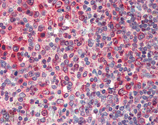Know Everything About Calnexin Antibody
Calnexin, a 90kDa chaperone proteins, is found in the membrane of endoplasmic retina. Calnexin, along with the calreticulin related protein, work together to ensure proper folding of glycoproteins. Calnexin is an important quality control monitor that ensures proper folding of proteins bound for the plasma membrane and secretion.
Calnexin has a lectin-site that recognizes substrate proteins using a transient intermediate oligosaccharide with a terminal glucose residue. Calnexin participates in most, if not all, glycoprotein folding through this interaction. Calnexin can recruit enzymes that facilitate disulfide bond formation or isomeriztion. You can buy Calnexin antibody kits via Boster bio.

Calnexin binding keeps substrate proteins in the ER till they are fully mature. The intermediate oligosaccharide of these substrate proteins is cleaved glucosidase I, or until they are ready for destruction. Calnexin can be used to survive in cells, but mice have severe neurological problems. This indicates that calnexin plays a role in other developmental processes such as regulation of Ca2+ homeostasis and protein folding.
Calnexin was initially identified as a key component in murine class I Histocompatibility Molecules. Calnexin, a calcium-binding protein embedded within the ER membrane, retains newly synthesized glycoproteins in the ER to ensure quality control and proper folding.
Calnexin's specificity for a particular subset of glycoproteins can be determined by the presence of a lectin, which binds an intermediate early oligosaccharide on the folding glycoprotein. Calnexin is an integral membrane protein that measures approximately 90 kDa in the endoplasmic reticulum.
Many resident ER proteins serve as molecular chaperones, and help in the proper folding and assembly of polypeptides into multisubunit proteins. Calnexin is associated with the major histocompatibility complicated (MHC) class 1 heavy chains, partial complexes, and the B cell membrane immunoglobulin but not with complete receptor complexes.